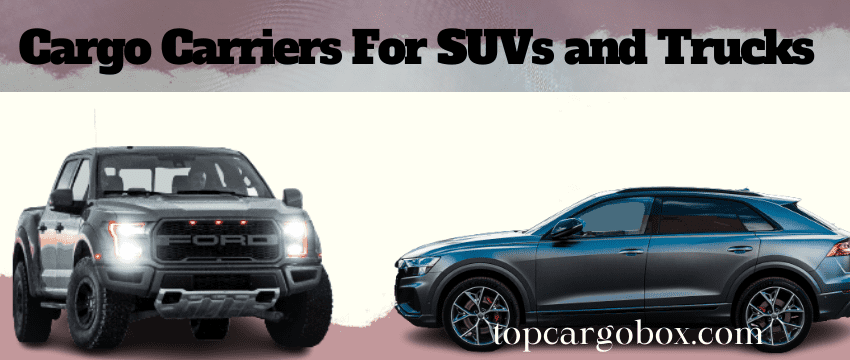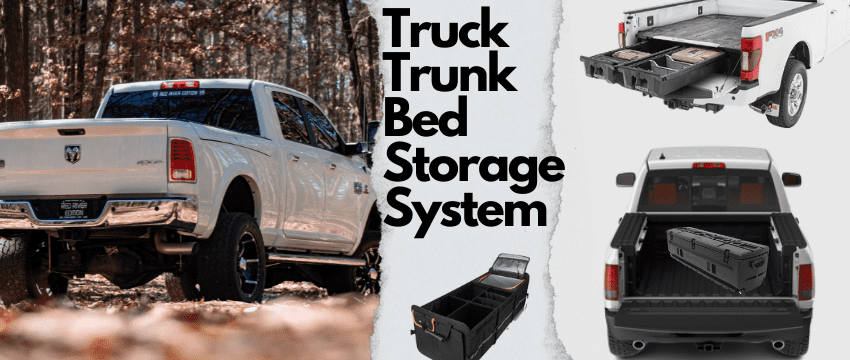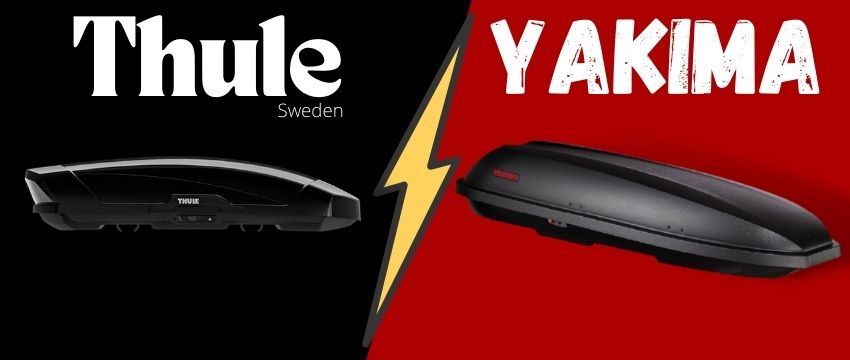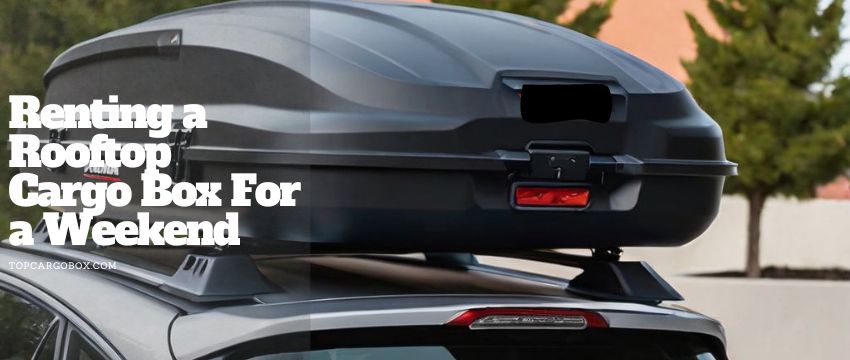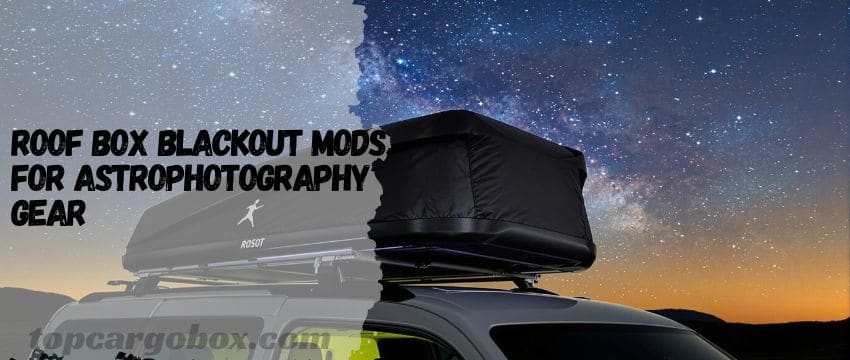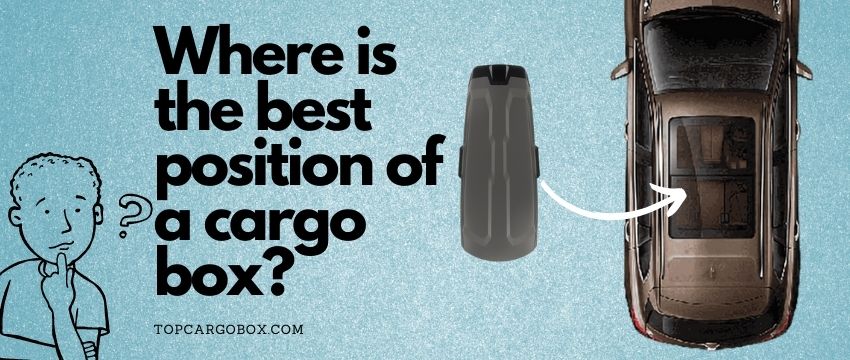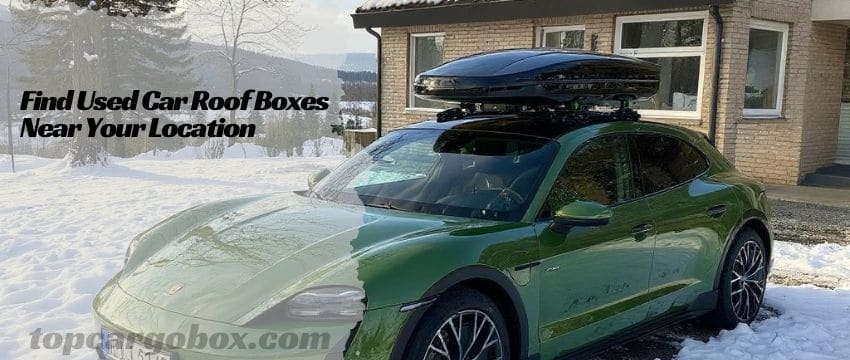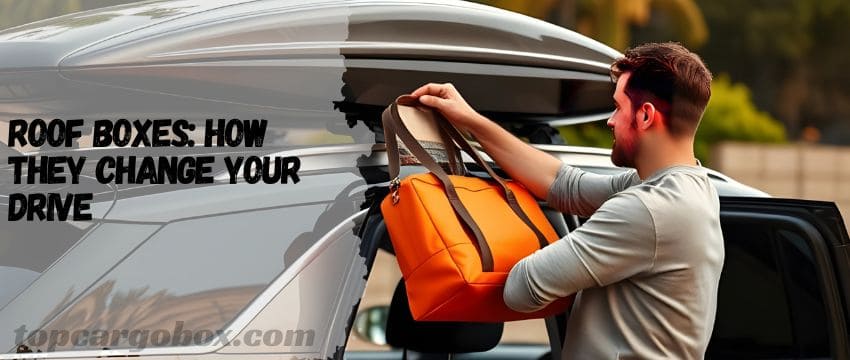When it comes to rooftop cargo boxes, there are plenty of questions that need answers. What are the different types available? How do you choose the right one for your needs? And what are the installation procedures?
In this blog post, we’ll answer some of the most common questions about rooftop cargo boxes. We’ll start by discussing the different types of boxes available, then move on to choosing the right one and installing it. Let’s get started!
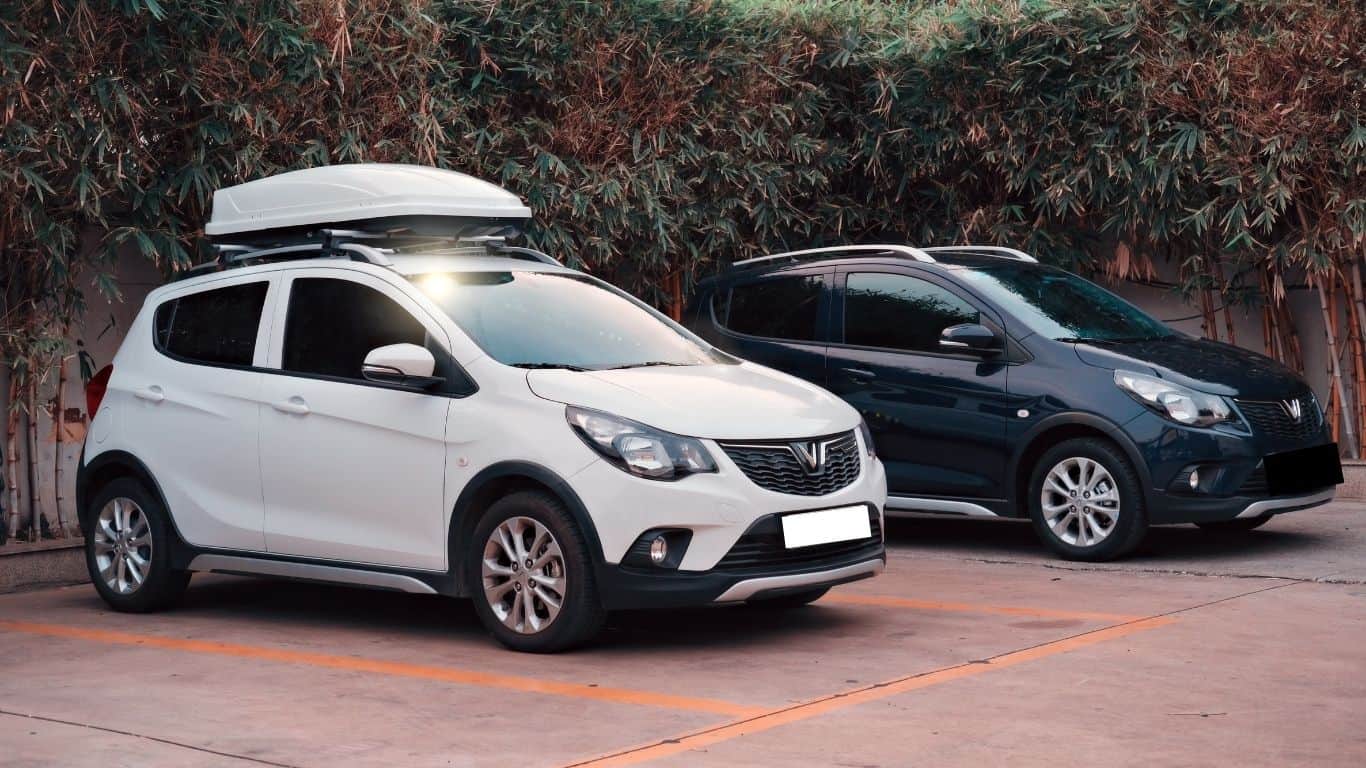
What are cargo boxes for?
Cargo boxes are storage containers that are mounted on the exterior (car roof) of a vehicle. They are often used to store items that will not fit inside the vehicle, such as camping gear or luggage. Cargo boxes can be made from a variety of materials, including plastic, metal, and fiberglass.
They are available in a variety of sizes, and some models can be opened from both the left and the right. This allows the driver to access the contents of the cargo box without having to face the coming traffic. Cargo boxes are a popular choice for people who frequently travel with large items.
What should I carry in the cargo box?
A rooftop cargo box is a great way to add storage space to your vehicle. They are perfect for carrying extra luggage, equipment, or supplies. But what should you put in your rooftop cargo box?
Here are some tips:
-Pack heavier items on the bottom and lighter items on top.
-Make sure you pack everything securely (with straps or ropes) so that it doesn’t move around while you’re driving.
-Pack bulky items towards the front or back of the cargo box, and avoid putting them in the middle.
-Pack items so that they won’t fall out when the box is opened.
-Label everything so you can easily find whatever you need.
For more ideas, consult your rooftop cargo box’s owner manual.
A rooftop cargo box is a great way to increase the storage capacity of your vehicle. They are perfect for storing items that you don’t use often, such as holiday decorations or sporting equipment. Here are some tips for what to put in your rooftop cargo box:
– Bulky items: If you have a lot of bulky items, a rooftop cargo box is a great way to store them. Bulky items can take up a lot of space in your vehicle, and they can be difficult to transport. A rooftop cargo box will give you the extra space you need to store these items.
– Seasonal items: If you have a lot of seasonal items, such as holiday decorations or camping gear, a rooftop cargo box is a great way to store them. You can store them away when they are not in use, and you don’t have to worry about taking up space in your vehicle.
– Sporting equipment: If you like to go camping, hiking, or biking, a rooftop cargo box is a great way to store your sporting equipment. You can easily access your equipment when you need it, and you don’t have to worry about taking up space in your vehicle.
– Pets: If you have pets, a rooftop cargo box is a great way to store their supplies. You can store food, water, bowls, leashes, and other supplies in the cargo box. This will keep them organized and easy to access.
Can you drive with an empty cargo box?
There are many opinions on this matter. Some people say that it is unsafe to drive with an empty cargo box on your roof, while others claim that it is perfectly safe as long as the box is properly secured. There are a few things to consider when making this decision.
The first thing to think about is the weight of the box. If it is too heavy, it could affect the balance of your car and make it difficult to drive. The second thing to consider is the wind resistance. An empty cargo box will create more wind resistance than a full one, which could make your car harder to control.
The best way to determine whether or not it is safe to drive with an empty cargo box on your roof is to try it out yourself. Start by driving slowly and pay close attention to how the car behaves. If you feel like the box is affecting the balance of your car or making it hard to control, then don’t drive with it.
It’s a common question that many people have: can you drive with an empty rooftop cargo box? The answer is yes, you can, but there are a few things you should know before doing so.
For one, driving with an empty cargo box can affect your car’s aerodynamics and fuel efficiency. It’s also important to make sure that your cargo box is properly secured before driving, as an unsecured box can fly off your car and cause a lot of damage.
How big is a cargo box?
Rooftop cargo boxes are a great way to transport large items, like furniture or a bicycle, without taking up a lot of room in your car. But how big are they, exactly?
A rooftop cargo box is typically about the size of a trunk and can hold up to 200 pounds. This makes them perfect for transporting large items without having to take up extra space in your vehicle.
There is no definitive answer to this question as the size of a rooftop cargo box will vary depending on the make and model of the vehicle. However, as a general rule, rooftop cargo boxes will typically be around 40-inches wide, 75-inches long, and 12 to 18 inches high. This will give you plenty of space to store luggage, camping gear, or other items that you need to take with you on your trip.
How much can you fit in an 18 cubic feet cargo box?
A lot! You can fit a surprising amount of stuff in a rooftop cargo carrier. Depending on the size and shape of the items you’re carrying, you could easily fit a bike, a small grill, and a few tents in there. Plus, if you have a cargo carrier with a cover, you can keep your belongings safe from the rain and sun.
A rooftop cargo carrier is a great way to free up space in your car for when you need to bring more people or equipment with you. They’re also great for road trips, as they give you an extra storage area to store snacks, drinks, and maps.
If you’re looking for a way to transport large items without taking up a lot of space in your car, a rooftop cargo carrier could be the perfect option. But with so many different models and brands on the market, it can be hard to know which one is right for you.
In this article, we’ll take a look at some of the factors you’ll need to consider when choosing a rooftop cargo carrier, and we’ll recommend a few of our favorites.
First, you’ll need to decide how much storage space you need. Most carriers come in sizes ranging from 12 to 18 cubic feet, so you’ll need to figure out how much stuff you need to bring with you.
You’ll also need to consider the weight of your cargo. Most carriers have a weight limit of around 165 pounds, so you’ll need to make sure your items won’t exceed that limit.
Size and weight are the two most important factors to consider, but there are a few other things you’ll need to think about as well.
For example, if your vehicle has a sunroof, you’ll need to make sure the carrier you choose is compatible with it. And if you’re not comfortable driving with a cargo carrier on your roof, you may want to consider a model with a built-in stand.
Finally, you’ll also need to think about the price. Rooftop cargo carriers range in price from around $80 to $1000, so you’ll need to decide what’s best for your budget.
Now that we’ve covered the basics, let’s take a look at some of our favorite rooftop cargo carriers.
1. The Thule Sidekick
If you’re looking for a rooftop cargo carrier that’s both versatile and affordable, the Thule Sidekick is a great option. This model can be used to transport either skis or surfboards, making it the perfect choice for outdoorsy types. It also has a built-in stand, so you don’t have to worry about it wobbling around on your roof. And at just $50, it’s one of the most affordable options on the market.
2. The SportRack Vista XL
If you need a cargo carrier that can accommodate a lot of gear, the SportRack Vista XL is a great option. This model has a capacity of 160 pounds, which is more than enough for even the heaviest loads. It also comes with adjustable mounting rails, so you can easily customize them to fit your vehicle. And at just $300, it’s one of the most affordable models on the market.
Can you put suitcases in the cargo box?
There are a few things to take into consideration when trying to figure out if you can put suitcases in a rooftop cargo box. The size of the luggage, the weight of the luggage, and the type of luggage all play a part in whether or not it will fit.
Most suitcases are about 22 inches wide and 14 inches high. However, not all rooftop cargo boxes are created equal. Some are designed specifically for smaller items, like suitcases, while others are larger and meant for bigger items, like camping gear.
The weight of the luggage is also important. If the cargo box is already full of other items, it may not be able to hold any more weight. Be sure to check the weight limit of the cargo box before loading it up with luggage.
Finally, it’s important to consider the type of luggage you’re using. Some suitcases have telescoping handles or wheels that may not fit inside a rooftop cargo box. If this is the case, you may need to remove the handle or wheels from the suitcase before putting it in the box.
The weight of the suitcase. Most rooftop cargo boxes are designed to hold a certain amount of weight, so if your suitcase is too heavy, it could damage the box or even the car.
The size of the suitcase is also important. Some suitcases are too large to fit in a rooftop cargo box. If the suitcase is too big, it might not fit inside the box at all, or it might stick out and be difficult to close.
Finally, you need to make sure that your car can handle the added weight of the rooftop cargo box. Some cars are not designed to carry extra weight on the top, so if you have a car like that, you’ll need to find a different way to transport your suitcase. You can consider using hitch-mounted cargo carriers instead of using the roof-mounted ones.
How fast should you go with a rooftop cargo box?
There are a lot of factors to consider when choosing the speed at which to drive with a rooftop cargo box. Many people are tempted to drive as fast as possible in order to get their cargo to their destination as quickly as possible. However, this is not always the best option.
There are a few things to consider when deciding how fast to drive with a rooftop cargo box. The first is the weight of the cargo. If the cargo is very heavy, it is important to drive more slowly in order to avoid putting too much stress on the vehicle. The second consideration is the type of cargo box. Some cargo boxes are designed to be aerodynamic and reduce drag, while others are not. Driving more slowly with a non-aerodynamic cargo box will help to reduce wind resistance and save on gas.
When you add a cargo box to your rooftop, it changes the aerodynamics of your car and how it handles. You need to go a little bit slower when you have one of these boxes on top, especially if it’s windy outside.
There are a lot of factors that go into how fast you can drive with a cargo box on your car. The weight of the box, the size of the car, the type of box, and the wind all play a role. As a general rule, you should drive about 5 or 10 mph slower when you have a cargo box on your roof.
If it’s windy outside, you’ll need to drive even slower. Wind can really affect the handling of your car when you have a cargo box on top, so it’s important to take it into account when you’re driving.
Will Thule rooftop cargo box fit my car?
There is no one-size-fits-all answer to this question, as the size and shape of Thule rooftop cargo boxes can vary depending on the make and model of your car. However, there are a few general tips that can help you determine if a Thule rooftop cargo box will be a good fit for your vehicle.
First, measure the height, width, and length of your car’s roof. Also, be sure to check the weight limit of your car’s roof to ensure that the cargo box you choose is within the safe carrying capacity of your vehicle.
If you’re still not sure if a Thule rooftop cargo box will be a good fit for your car, contact the Thule customer service team for help.
There are a few factors you need to consider when trying to answer this question. The size and shape of your car, as well as the size of the Thule rooftop cargo box, are both important.
The size of your car is important because you need to make sure that the cargo box will fit on top of it. The shape of your car is important because not all cars have a perfectly flat roof. If the cargo box doesn’t fit properly, it could damage your car or blow off while you’re driving.
The size of the Thule rooftop cargo box is also important. You need to make sure that it will be able to fit all of your belongings.
Can I put a Thule rooftop cargo box on a Yakima roof rack?
There are two types of roof racks that you can use – Thule and Yakima. Thule is a more popular brand, and its racks are designed to be universal, meaning that they can be used with a variety of different vehicles. Yakima racks, on the other hand, are designed for specific makes and models of cars.
If you have a Thule rack, then you can use a Thule cargo box. However, if you have a Yakima rack, you cannot use a Thule cargo box – you will need to use a Yakima cargo box.
There are a few different types of roof racks on the market, but Yakima and Thule are two of the most popular brands. They both have their own unique set of products, and it can be difficult to determine which one is right for your vehicle.
One option is to use a roof rack adapter. This will allow you to use a Thule cargo box on a Yakima roof rack. However, it is important to make sure that the adapter is compatible with your vehicle and the cargo box you choose.
Which is better Thule or Yakima?
When it comes to rooftop cargo boxes, there are a lot of different brands and models to choose from. Two of the most popular brands are Thule and Yakima, both of which have their pros and cons.
Thule is a well-known brand and is known for making high-quality products. Their rooftop cargo boxes are no exception, and they come with a number of features that make them a popular choice among consumers. One of the main benefits of Thule boxes is that they are very easy to use. They also have a sleek, modern design that many people prefer over the more traditional look of Yakima boxes.
There are a few factors to consider when purchasing a rooftop cargo box. The type of vehicle, the amount of storage needed, and personal preferences should all be taken into account.
Some people prefer the Thule brand, while others prefer Yakima. Both brands have their pros and cons. Some people find that the Thule boxes are more aerodynamic and easier to use, while others find that the Yakima boxes are more durable and have a better warranty.
Ultimately, the best rooftop cargo box for someone depends on their specific needs and preferences.
Why should you remove a roof rack when not in use?
Roof racks are a necessity for many drivers. They can be helpful when you need to transport a lot of items, but they can also be a major eyesore when they’re not in use. Not to mention, they can be dangerous if they’re not properly secured.
Here are three reasons why you should remove your roof rack when it’s not in use:
1) It can damage your car. When a roof rack is installed and not used properly, it can cause damage to the car. This includes scratches and rust.
2) It can reduce your gas mileage. A roof rack can create wind drag, which reduces your gas mileage. In fact, you can lose up to 5% in gas mileage for every 50 pounds you carry on your roof.
3) It’s a safety hazard. A roof rack that isn’t properly secured can fly off of the car while driving, putting both the driver and other motorists at risk.
A roof rack can be a great way to increase the amount of storage space in your car. However, it is important to remove the rack when it is not in use to avoid damaging your car and to improve fuel economy.
The main reason you should remove a roof rack when not in use is that it can damage your car. A roof rack increases wind resistance and can cause your car to use more fuel. Additionally, a roof rack can damage the paint job on your car and can also lead to rusting.
In addition to reducing wind resistance and improving fuel economy, removing a roof rack when not in use can also make your car easier to drive. A roof rack can increase the height of your car, making it more difficult to steer and control. Removing the rack when not in use will help improve your driving experience.
Can a rooftop cargo box overhang?
There is no definitive answer to this question. It depends on the size and weight of the cargo box, as well as the length of the overhang. Generally speaking, it is probably a safe bet to assume that a rooftop cargo box can overhang as long as it is not too heavy or too large. Consult with a professional to be sure.
How much weight can a rooftop cargo box hold?
When looking for a rooftop cargo box to hold extra gear for a road trip or camping, it’s important to know how much weight it can handle. Rooftop cargo boxes are not all created equal. Some are made with stronger materials and can hold more weight than others.
It’s also important to be aware of the weight limit of your vehicle. If the rooftop cargo box is too heavy, it can cause damage to the car and even lead to a crash. Be sure to read the product specifications before purchasing a rooftop cargo box, and to be mindful of the weight limit when packing for a trip.
When it comes to rooftop cargo boxes, size definitely matters. The capacity of a cargo box is determined by the weight it can hold and the size of the vehicle on which it will be mounted.
Most cargo boxes are designed to carry between 150 and 300 pounds (50kg – 75kg), but there are a few that can hold more. It’s important to choose the right cargo box for your needs and to make sure that it is securely fastened to your vehicle.
Our team is creating outdoor-gear relevant articles with passion. If our articles can help you to find the correct solutions for your questions, we will be happy about that. In the content creation process, we usually collect accurate and useful information online or offline to compile our content in an organized way. Consequently, we can guarantee that you can discover some expected answers to your questions. We appreciate your time on our site.


